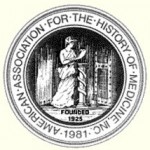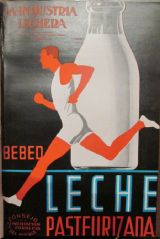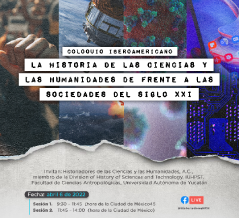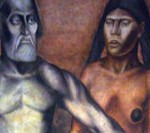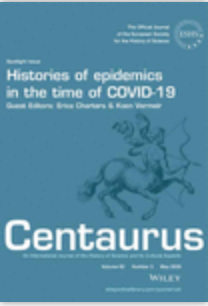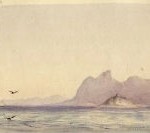August, 2017
Vivian Mannheimer| Blog HCS-Manguinhos
On August 2-3, 2017, Fiocruz was the host of a workshop that discussed the natural historical and medical knowledge produced in the New World, specifically in Latin America, between the 16th and the 20th centuries.

Mark Thurner, coordinator of the research network LAGLOBAL. Fiocruz, Rio de Janeiro, July 2017.
The international workshop “Worlds of Nature and Medicine: New Historical Perspectives” organized by the LAGLOBAL research network, was held a few days after the 25th Intenational Congress of History of Science and Technology (ICHST) in Rio de Janeiro. This workshop was the third meeting of the network and the next event will take place in Quito, Ecuador at the FLACSO Congress in January.
LAGLOBAL is an international research network supported by the Leverhulme Trust and coordinated by the Institute of Latin American Studies (ILAS). It has also seven partners: University of St Andrews (Scotland); Consejo Superior de Investigaciones Científicas (Spain); El Colegio de México; Facultad Latinoamericana de Ciencias Sociales (Ecuador); Fiocruz (Brazil); the John Carter Brown Library at Brown University and the University of Texas (US).
In an interview during the event, the Professor Thurner talked about the project and its goals.
What is the aim of the LAGLOBAL research network?
The idea is to insert Latin America in the global history of knowledge and science, and to thereby change the shape of the field. Historically – and this is particularly the case in the UK, Europe and the US – in academic Departments of History and History of Science and Medicine, Latin America is is treated as a periphery, if at all. But there is plenty of evidence to suggest that Latin America was central to the development of global knowledge and particular kinds of science. To address this common misconception of marginality we decided to put together an international network of experts.
What are the main topics addressed by the network?
We have four working groups. The first is focused on history and anthropology. The New World is, we argue, actually at the cutting edge of new historical and anthropological knowledge. It produced a global revolution in thinking about the history of humanity.
We have a second group working on practices of collecting and then displaying and explaining collectionsto the public. This is another area in which the New World is actually a pioneer, sincemany people studying the New World could not make the journeyt. So, collecting and display became a very important technology for the transference and exchange of knowledge.
The third group, which is this group here at the FIOCRUZ workshop, is focusing on the history of medicine and nature. Again, ‘nature’ and ‘medicine’ are concepts and practices that in many cases were pioneered in the Americas: new cures, new animals and plants being discovered, new taxonomies emerging to describe them.
The fourth group is working on theory and method. The discipline of History of Science generally associates the development of scientific method and theory with the institutions in Europe or North America. But this view is no longer widely accepted by scholars. Instead, we see that ways of thinking and explaining the world emerged all over the place. They emerged in maps and reports written by missionaries and explorers in the region, in the slave trade, in the trade of plants, and in universities, libraries and museums around the region. Many of the basic methods and theories about the world often emerged not in European centers but out there in the wider world.
How do you see the knowledge that is currently being produced in Latin America?
There is excellent work being done in Latin America. But the work here has always been connected to global developments. Although there is a tendency to think of the production of knowledge in Latin America in national terms, historically it has always been transnational or global, with communication between researchers in different countries. Particularly now, giving the digitalization of knowledge, everything is online. What is needed is putting this knowledge into an understandable format that addresses the big story of how global knowledge was and is made, and that is what we are doing in the LAGLOBAL network. We are taking all this knowledge, created in many parts of the world, and bringing it together in coherent narratives and exhibits that address major questions in the history of knowledge. We will eventually make our work available online to anyone who has a computer.
Related articles in Manguinhos:
Silva, Francismary Alves da. A história das ciências e os saberes tradicionais. Hist. cienc. saude-Manguinhos, Abr 2017, vol.24, no.2.
Conceição, Gisele C. Evidences of the circulation of natural philosophical knowledge about Brazil in a 1763 manuscript by António Nunes Ribeiro Sanches. Hist. cienc. saude-Manguinhos, Abr 2017, vol.24, no.2.
Tabernero, Carlos, Jiménez-Lucena, Isabel and Molero-Mesa, Jorge. Colonial scientific-medical documentary films and the legitimization of an ideal state in post-war Spain. Hist. cienc. saude-Manguinhos, Apr 2017, vol.24, no.2.
Read about the 25th ICHST, held from 23 to 29 July 2017, in Rio de Janeiro:
 Michael Osborne, professor of History of Science at Oregon State University, talks about his current work on yellow fever and his priorities as the new president of DHST.
Michael Osborne, professor of History of Science at Oregon State University, talks about his current work on yellow fever and his priorities as the new president of DHST.
“El número de citaciones no es representativo de la calidad de los trabajos que estamos produciendo”
Science journals and digital innovation
 Cueto was nominated President-Elect by a majority vote of the General Assembly during the 25th ICHST.
Cueto was nominated President-Elect by a majority vote of the General Assembly during the 25th ICHST.







